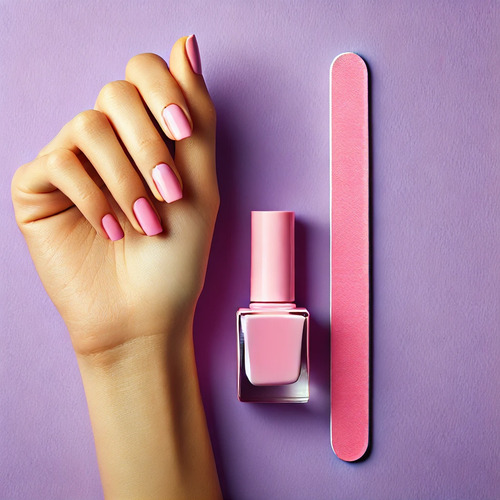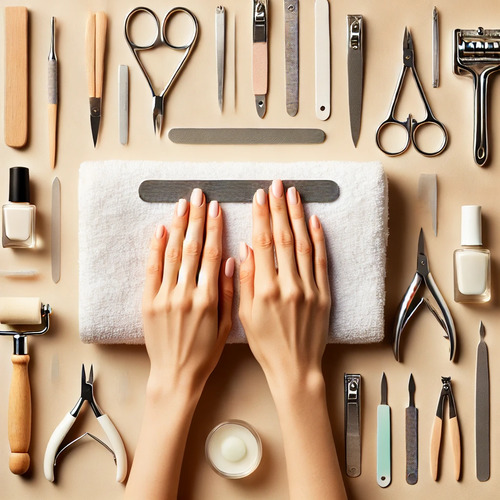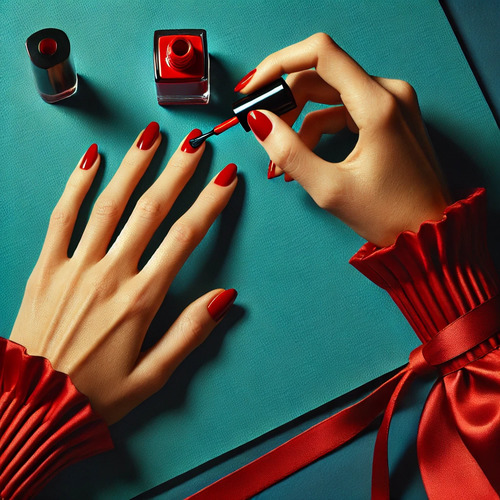A beautiful manicure does not always mean a flawless execution. It is important to pay attention to certain points during the procedure to avoid common mistakes. Read in our article what to avoid when performing a manicure.
1. Cuticle trimming
Manicure masters continue to discuss the necessity of cuticle trimming. The complete removal of cuticles is physiologically wrong, as they act as a protective barrier for the nail root, keeping it safe from dirt. Instead of completely trimming cuticles, it is recommended to gently exfoliate the keratinised part using specialised products such as removers.
2. File your nails from side to side
It seems that more and more people are choosing to shorten their nails by quickly working them in two directions. However, experts warn that this method can have a negative impact on the health of your nails, causing micro-tears that make them weaker and more brittle. It is important to treat the nails only in one direction, starting from one corner and gradually moving to the other. Although this technique requires more time and patience, it goes a long way in maintaining healthy nails and their longevity.
3. Applying a thick coat of nail polish
It is recommended to apply three or four thin coats of nail polish instead of two thick coats. Thin coats dry much faster, which reduces the risk of bubbling. In contrast, thick layers take longer to dry and can negatively affect the quality of the manicure. In addition, when applying thin layers, it is much easier to correct possible mistakes.
4. Shaking the nail polish bottle
To make your nail polish more fluid and easier to apply, avoid shaking the bottle up and down. This process can create tiny air bubbles in the nail polish composition, resulting in uneven nails after application. And after all, most people prefer an even manicure! Instead, it is recommended to gently roll the bottle between your palms. This will ensure a better consistency of the nail polish without introducing air and will help you achieve the perfect result.
5. Do not treat the tips of your nails
To ensure the longevity of your nail polish and prevent chipping, it is important to ‘seal’ the tips of your nails. When applying your finish, pay attention to the edges of your nails by running your brush over the tips of your nails a few times, creating an extra protective barrier. This simple technique significantly extends the life of your manicure and helps to avoid cracks and chips.
6. Careless application of top coat
Because of its transparency, top is often applied to the nails with less care than coloured polish. Although it may not be immediately noticeable, once all coats are completely dry, areas where the topcoat has gone beyond the colour become visible. Also, in areas where there is no coloured varnish underneath the top coat, it can peel off and chip more quickly. This carelessness can significantly reduce the life of the manicure, so it is important to pay attention to each step of application.
7. Drying your nails in cold water
Contact with cold water does not speed up the drying of nail polish; in fact, it only changes its consistency. The nail polish does not dry in the usual sense, but hardens when exposed to oxygen. To optimise this process, it is recommended to keep your hands in the air rather than in water.
However, if the manicure was done a few hours ago, it is best to wash your hands with cold water. Warm water can cause the nail plate to expand, causing the nail polish layer to retain its size, and this can quickly ruin a fresh manicure.
8. Using cotton swabs
Many people think that the easiest way to remove nail polish stains is to soak a cotton bud in solvent and wipe the coloured marks off the skin. However, cotton swabs are quite wide, and a sloppy movement can cause the nail polish to get on your nails. Therefore, professionals recommend using thin nail brushes when you need to fix or clean up details. These brushes provide better control and allow you to achieve a more precise result without affecting the manicure itself.



